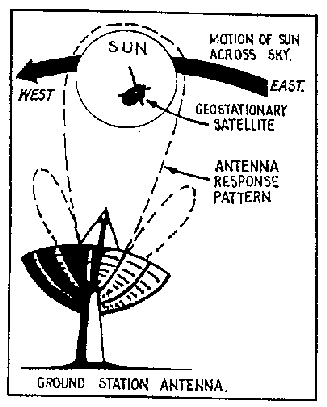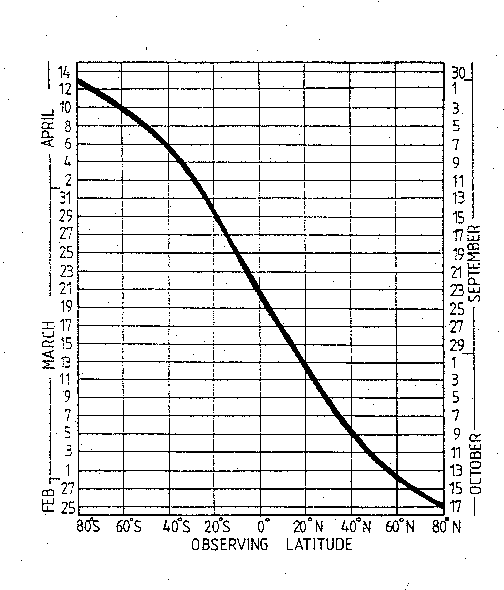Satellite Interference By The Sun
The geosynchronous orbit is now used by many satellites for routine telecommunication and broadcast purposes. Such satellites appear to be stationary as viewed from the ground, and are able to provide coverage over large areas. Although such communication is not subject to the vagaries of the ionosphere, it is subject to interference from the Sun. Around the time of equinoxes each year, the Sun tends to pass behind the line of sight of geostationary satellites at some time during the day. Since the Sun emits strong radio signals across a wide range of frequencies, it is often difficult to pick out the desired satellite signal from the radio noise of the Sun.

The level of interference that will be experienced depends upon the frequency of operation, the antenna beamwidth, the receiver bandwidth, the acceptable signal to noise ratio, and the level of solar activity at the time.
The Sun's output at VHF is relatively low and few communications systems are affected unless they are very wideband or there happens to be a large solar radio flare at the time the Sun is in the antenna beam. The Sun's radiation output is greater at higher frequencies however. At 4 GHz the solar radio emission exceeds the signal typically received from a television broadcast satellite by about 20 dB (a factor of 100).
The graph below indicates the days on which the maximum solar interference will occur for a given latitude. A significant but lesser interference will occur for about a week on either side of this date. The duration of the interference reaches a maximum of about 30 minutes on the day of maximum effect, decreasing to either side. The time of day at which the interference occurs depends upon the relative position of the satellite. A satellite in the western sky will be subject to interference in the afternoon and in the eastern sky in the morning.
ASWFC provides an online tool that calculates the dates and times of solar satellite interference.

Material prepared by John Kennewell and Andrew McDonald





